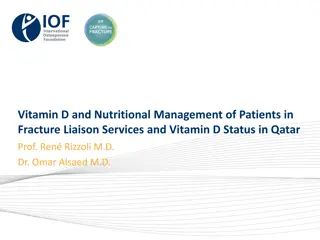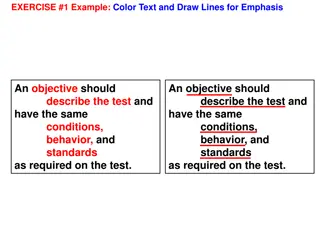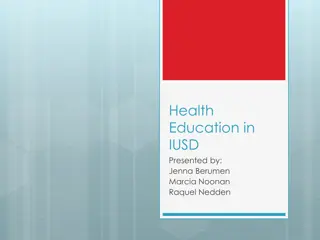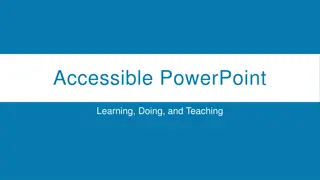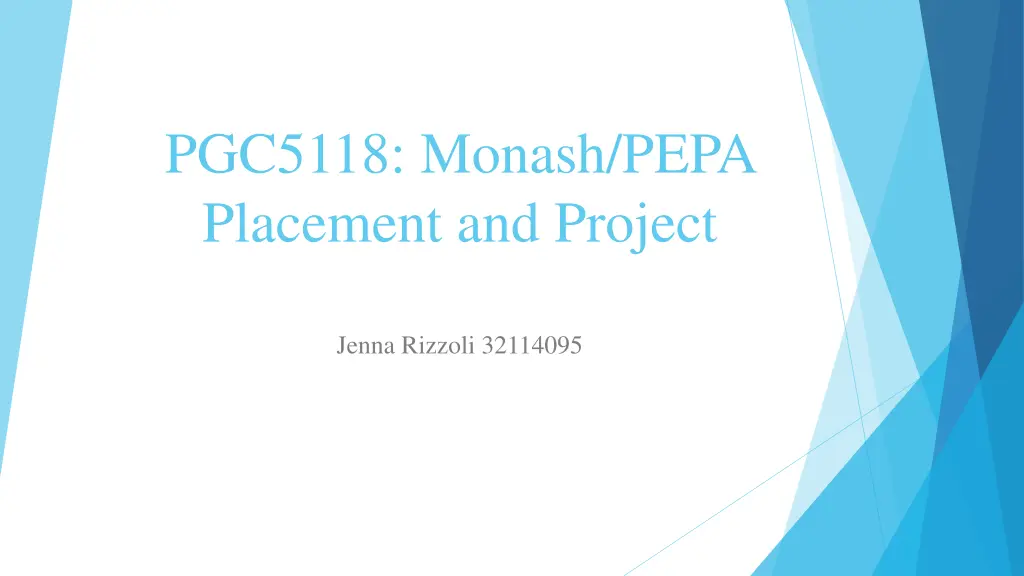
Enhancing Palliative Care Prescribing in Rural Settings
Implementing a tailored guideline for end-of-life prescribing in rural and remote areas to improve medication safety and streamline care. The initiative aims to address variations in practice, provide quick reference tools, and enhance symptom management for better patient outcomes.
Download Presentation

Please find below an Image/Link to download the presentation.
The content on the website is provided AS IS for your information and personal use only. It may not be sold, licensed, or shared on other websites without obtaining consent from the author. If you encounter any issues during the download, it is possible that the publisher has removed the file from their server.
You are allowed to download the files provided on this website for personal or commercial use, subject to the condition that they are used lawfully. All files are the property of their respective owners.
The content on the website is provided AS IS for your information and personal use only. It may not be sold, licensed, or shared on other websites without obtaining consent from the author.
E N D
Presentation Transcript
PGC5118: Monash/PEPA Placement and Project Jenna Rizzoli 32114095
PEPA Placement Conducted at Townsville University Hospital (Tertiary Hospital) 6th 9thof April 2021 End of life prescribing tool local guideline for palliative care unit Gap in prescribing for palliative care at rural and remote sites, unclear guidance on clinical prescribing pathways
Introduction Currently primarily located at a 24 bed rural hospital in North West Queensland High elderly demographic No specialist palliative care services on site Limited access to palliative care services in rural and remote Australia(1,2) Variations in clinical practice resulting in unwanted clinical outcomes in the area of palliative care(3) Role of the pharmacist is vital: Ensures optimal medication management(4) Improve patient centred care outcomes in the setting of palliative care(4) Minimising harm, potential drug interactions, correct dosages, improved symptom control
Objective Implement a local guideline tailored towards prescribing at end of life for a rural and remote setting Aim to streamline prescribing and reduce the current variations in the palliative care settling Direct prescribing when pharmacist is not available Improve medication safety
Implementation of the Guideline Tool Adapted for a rural and remote site Extra information provided for end of life care Quick and easy reference tool Covers major areas of symptomatic issues experienced at end of life Presentation conducted around the use of the simple guideline tool to the medical team
Evaluation of Guideline Tool Pre and Post questionnaire developed to measure impact 4 simple questions prior and post presentation Knowledge and ability of managing palliative care symptoms at end of life Confidence Familiarisation of relevant palliative care resources and where to locate General consensus of a clear outline for guidance regarding prescribing and managing symptoms in end of life (Pre presentation) Use of the simple guideline tool moving forward (Post presentation)
Evaluation of Guideline Tool Knowledge and Ability Results from the presentation questionnaire in favour of simple prescribing tool 60.00% 50.00% 40.00% 87.5% of participants felt they would Often use the tool in the setting of palliative care 30.00% 20.00% 10.00% Improvement in all areas targeted by questionnaire and presentation 0.00% 1 2 3 4 5 6 7 8 9 10 Pre Survey Post Survey Resources and where to locate Confidence 40.00% 60.00% 35.00% 50.00% 30.00% 40.00% 25.00% 20.00% 30.00% 15.00% 20.00% 10.00% 10.00% 5.00% 0.00% 0.00% 1 2 3 4 5 6 7 8 9 10 1 2 3 4 5 6 7 8 9 10 Pre Survey Post Survey Pre Survey Post Survey
Follow-up and Reflection Guideline tool to be placed in nurses station to guide future prescribing for prescribers Follow-up presentations Impact and future innovations Greater impact than expected Endorsement and implementation to all rural and remote sites in the Townsville hospital and health service Interest from local GP surgery Lessons learnt Development of additional flow charts for future use Additional presentations required to capture a wider audience
References References: Khalil, H, Poon, P, et al. (2019). Challenges Associated with Anticipatory Medications in Rural and Remote Settings. Journal of palliative medicine, 22(3), 297 301. https://doi.org/10.1089/jpm.2018.0354 [cited April 8] 1. Davidson, P, Kristjanson, L, et al. (2006). Enhancing palliative care delivery in a regional community in Australia.Australian Health Review, 30(3), 370 379. https://doi.org/10.1071/AH060370 [cited April 8] 2. Australian Commission on Safety and Quality in Healthcare. 2021. Healthcare Variation. Retrieved from: https://www.safetyandquality.gov.au/our-work/healthcare-variation [cited 2021 April 8] 3. Hussainy, S, Box, M, Scholes, S. (2011). Piloting the role of a pharmacist in a community palliative care multidisciplinary team: an Australian experience. BMC Palliative Care, 10(1), 16 16. https://doi.org/10.1186/1472-684X-10-16 [cited April 8] 4.





